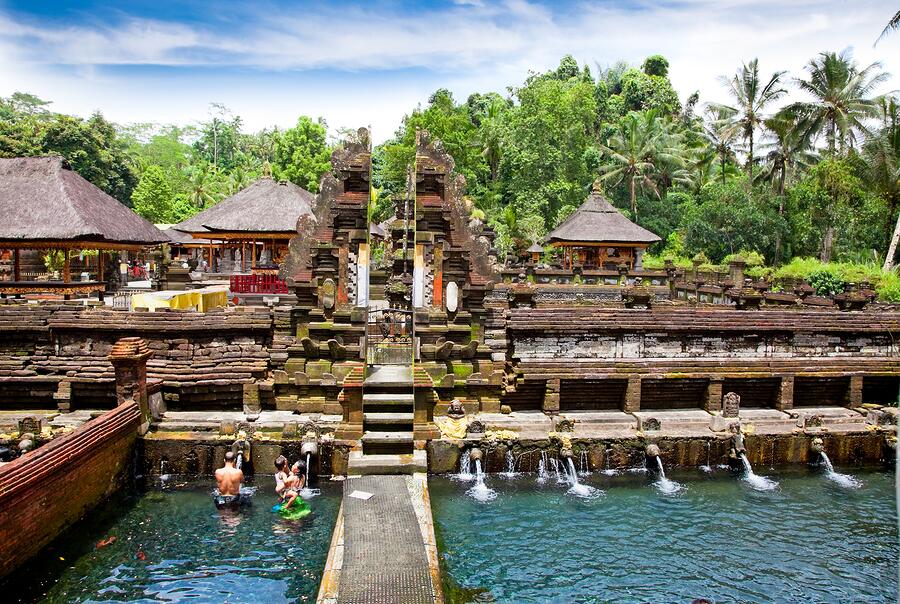Gunung Kawi Sebatu Temple
Located in Central Bali, Gunung Kawi Sebatu Temple is one of Bali's best kept secrets. Known by the locals as Pura Tirta Dawa Gunung Kawi Sebatu, it is actually one of Bali's least visited temples despite being one of the most tranquil and beautiful. A special find for visitors, the temple complex features magnificent ancient shrines and lush verdant gardens surrounded by crystal clear pools filled with blossoming lotus flowers.

Located 12km northeast of Ubud, the temple is situated within Sebatu, a highland village in Tegallalang. Approaching the temple, a small winding descent offers a bird's eye view of the entire complex and water gardens. A refreshing spot to relax and soak up the peace and tranquillity of the water features, one of the main highlights of the temple is the singular shrine Taman Suci. Situated next to a rectangular pond backed by dense green hills, this is the perfect photo opportunity for that postcard perfect Bali snap.
Upon entering the temple, visitors will walk down a cobblestone path to find an incredible water garden complete with a large pool containing golden carp. At its centrepiece is the figure of Sarasvati,(a Balinese goddess), and pond where you can feed the friendly fishes (for just AU50c). Beside the main pool there are a number of walled washing sections that locals and visitors are welcome to use for bathing. Of course, photography in this area is forbidden and there are signs in both Indonesian and English that clearly state this.
Heading north within the grounds, visitors will pass a green lawn upon reaching the 'candi bentar' temple gates. These lead to the elevated grounds of the main temple. Visitors may also come across some wildlife including rare breeds of chickens, free roaming tam fowl and even juvenile deer.
Open everyday from 8:00am to 4:00pm Gunung Kawi Sebatu Temple costs 15,000 Rupiah (AU$1.50) entry fee for adults and 7,500 Rupiah ($0.70c) for children. Visitors are also recommended to wear respectful clothing covering shoulders and knees and will be given a customary waist sash to wear during their visit.




